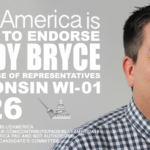The corporate media outlets are ever so fearful that the raw emotions unleashed by the fate of young black men at the hands of the police will lead to vandalism and looting… they are not so attentive to the wholesale looting conservatives have in mind for America’s pension funds. The retirement savings of millions of Americans — The money scraped together from modest earnings over a life time — The funds intended to keep elderly Americans out of poverty.
The Financialists’ attack on American pension funds encompasses both the public and private sector, and it is nothing less than A Great Pension Robbery.
The Public Sector Great Pension Robbery
Those, like the Arnold Foundation, who would like nothing more than to get their financialist mitts on public pension funds must first convince people that it would be “better” for the private sector to handle public employee pension funds, and to do so requires a concerted campaign of mis-information and dis-information about pension funds for public employees which are not associated with Social Security. This scam incorporates a multi-layered attack.
Layer One: Convince the general public that public sector employees are pigs at the taypayer’s trough. The evidence for this line of assault is rather blatant. The media is only too pleased to provide outlier stories of high pensions such as “Retired Doctor Earns Highest Pension in Illinois History,” [Fox Chicago] or “$204,000 per year, Is This Retired Cop’s Pension Too High?” [Atlantic] or “Wall Street Isn’t The Problem, The Benefits Are” [New York Times] and a steady drum beat of propaganda from the conservative think-tank network including the Manhattan Institute, Cato Institute, Heritage Foundation, etc. will eventually lead to headlines like “Half New Jersey Voters Say Pension Are Too High.” [Courier Post]
Layer Two: A coterminous line of attack comes from those who want “transparency,” or say they want “accountability” on the part of public pension funds so that the public will know exactly how much retirees are benefiting from their pensions. That there may be some very serious breaches of identity and financial information is given far less consideration than the idea that the publication of benefit amounts will result in little gold mines of outlier amounts which can be inserted into articles about “highest pensions,” leaving out the part about average benefits, or the levels of training, education, seniority, and other factors which contributed to the pension. Nor is it made clear in many articles that the employees themselves have made contributions to the retirement plan. The impression is left that the taxpayers are footing the entire freight for “outlandish” pension benefits. The impression is false, fallible, but if repeated often enough rather enduring.
Layer Three: Convince the general public that public employee pension obligations are the cause of financial problems in the political subdivisions or governments. This assault requires that we ignore the gorilla in the corner – that local and state governments are saddled with enormous subsidies and tax breaks for corporations which dwarf the pension short-falls citied in the alarmist publications. [OurFuture]
Cities, counties, and states in this country are subsidizing corporations to the tune of $696 per family. [NYT] In the state of Nevada that adds up to to nice $33.4 million, or $12 per capita, or more specifically: $16.4 million in sale tax refunds, exemptions, or other sales tax discounts; $10 million in cash grants, loans, or loan guarantees, and $5.54 million in property tax abatements. State Tax credit, rebate, or reductions over $5 million have gone to Apple Inc., Switch Communications, Amonix, Enel North America Inc, Solargenix Energy LLC, and PowerLight Corporation. Other reductions have been given to Georgia Pacific, Sherwin-Williams, Western Dairy Specialties, General Motors, PPG Industries, Cardinal Health, Ford, Ocean Spray Cranberries, General Electric, Global Health Management, Ameriprise Financial, Johns Manville, ING Financial Services, Intuit Inc, and Starbucks Mfg Group. [NYT]
It’s obvious that the arguments are being framed in terms of why public pension benefits must be cut in order to preserve services – NOT as public pension benefits must be cut in order to preserve tax credits, abatements, reductions, and rebates for corporations.
Layer Five: Convince the general public that public pensions must be “reformed” into defined contribution plans and that those plans could be more efficiently run by private financial interests. The predominant theme is that the current plan is “insolvent,” and therefore must be reformed! Not. So. Fast. From the “If You Can’t Dazzle Them With Facts Baffle Them With Bull Shit” Department, there’s the RJ’s editorial with these three instructive paragraphs:
But the best argument for pension reform is not how Nevada’s fund compares to those of other states. It’s how public employee pension benefits compare to the compensation and retirement options available to the taxpayers who fund the pension system. Which is to say they don’t.
That’s because the defined-benefit pension has all but vanished from the business world. Portable savings plans such as 401(k)s have taken their place, and many companies can no longer afford to provide matching contributions. Workers largely are on their own in saving for retirement, with the insolvent Social Security system as a backstop to poverty.
Yet they’re also on the hook for the retirement of public employees, who can start collecting benefits after as few as 20 years of work. Already, taxpayer-funded pension contributions are squeezing public services such as public safety and education. Those contributions are creeping ever higher to ensure PERS can make good on its generous benefits, which are based on top salaries, not an average of lifetime earnings.
Let us parse: Having acknowledged that the Nevada system IS, in fact, solvent, the RJ dismisses that and hurries on to the rationalization for the Great Pension Robbery. Compare the pensions to the “taxpayers who fund the system?” Wait a minute. By this standard the public employee would only receive pension benefits equal to or less than the lowest pension benefit available to the general public. Or, a public employee with a master’s degree in hydrological engineering would be a pig at the trough if he or she were paid benefits greater than a mechanic at Lou’s Garage? On some alien planet this might make sense – just not on this one.
The second paragraph is just as interesting, and we’ll return to it in another context in a moment, but for now we should note that what the editorial is arguing for is that government should adopt not the best practice (defined benefit plan) but the worst (defined contribution plan) and should do so because everyone else is doing it – ignoring the reason WHY it’s being done that way. Defined contribution plans are good for the shareholders (read: institutional investors) in private corporations because they increase shareholder value – i.e. reduce personnel expenses. There is no “shareholder value” to be accomplished by slashing or “reforming” public sector employee benefits – there is only “austerity” on steroids, cost cutting so that the subsidies, and tax breaks for the corporations can be maintained.
And, notice once more – the argument is framed as if the pension obligations are squeezing the availability of services, NOT that the pension obligations are making it more difficult to balance a budget wherein revenue is restricted by low tax rates, tax credits, tax rebates, tax reductions, and outright subsidies for corporations. Those who argue for pension “reform” having no traction on the solvency element appear to be playing the Pig at the Trough Game combined with an unsustainable argument about equity.
The Private Sector Great Pension Robbery
Now that we’ve stuck a toe into the slime of defined contribution plans and 401(k) ‘reforms’ in the business sector, it’s time to take a look at what the financialist robber (barons?) have in mind for those other taxpayers.
Yes, indeed, those 401(k) plans are popular, with the corporations, but that doesn’t mean they are necessarily a good deal for the workers. Seeking Alpha, a popular financial blog, is a bit pessimistic about these plans:
“But, beginning in the 1980s and accelerating of late, we have gone off into a different direction. Most concerning to this conversation is the death of the pension, and the replacement of pensions with 401ks/IRAs, etc. Why is this concerning? Clearly, when you are forcing people who have no acumen and are hardwired to avoid risk to invest on their own to provide for their old age, that is a recipe for disaster. That would be fine, if the consequences for our society weren’t so devastating.”
All right, the idea of having financial novices in charge of their own pension plans isn’t necessarily a good idea – you can call it ‘Freedom’ if you like, but it boils down to YOYO – you’re on your own. And, in a world of volatile markets which may or may not be rigged against the little guy, the 401(k) notion is dubious at best. We might want to take a moment to look at this more closely – why is the 401(k) not the best way to insure the ability of seniors to stay out of poverty in their later years.
Most workers don’t have enough money left over after basic expenses to invest in an individual pension plan, and now we have the numbers to prove it:
“When broken down to the individual level, those numbers add up to nowhere near enough money. According to a recent report issued by the National Institute on Retirement Security, the median amount a family nearing retirement has saved for their post-work lives is $12,000. As for the magical 401(k)? If a household where the earners are between the ages of 55 and 64 does have a retirement account, they barely hit the six-figure mark at $100,000—a far cry from $1 million we’re told we need.” [Salon]
Anyone who wants to get into the weeds of this argument needs to take the time to read the testimony of John Bogle, founder of the Vanguard group, before the Senate Finance Committee on September 16, 2014. (pdf) Among Bogle’s suggestions we find, limited participation, and excessive management fees cited as problems for the 401(k) advocates. This finds support from other voices who note:
“Most middle-class savers end up either undersaving, overtrading, investing in excessively high-fee vehicles or some combination of the three. A small number of highly compensated folks now have lucrative careers offering bad investment products to a middle-class mass market based on their ability to swindle people.” [Slate]
There are a couple of elements in the Great Private Pension Robbery which perhaps need a bit more explication. First, most people have no idea how much they are paying in management fees for their retirements investments. Secondly, most people have no idea how and why that management makes investment decisions on their behalf.
There are two kinds of fees charged, the management fee – usually about 1-2% depending on the size and structure of the plan, and the trading fee, based on the activity of the account. And most people don’t have a clue how much they are paying and for what. [MJ] And, we are not speaking of some piddling amount in fees, as the study by Demos discovers:
- “According to our fee model, a two-earner household, where each partner earns the median income for their gender each year over their working lifetime, will pay an average of $154,794 in 401(k) fees and lost returns.
- A higher-income dual-earner household, one where each partner earns an income greater than three-quarters of Americans each year can expect to pay an even steeper price: (as much as) $277,969. “
Those fees and the accounts to which they are attached are extremely attractive for the denizens of the Wall Street Casino, and there’s a little secret involved – there are cheaper ways of investing for retirement, but they aren’t likely to be included in the pitch from the investment managers. Why? The explanation requires that the worker know the difference between “active” and “passive” management:
“Most funds are “actively managed” by managers who pick and choose stocks for their funds, and the fees for these services add up to about 0.93 percent on average — again, year after year, every year. Putting your 401(k) money in passive “index” funds, which simply and automatically track the returns of major stock market indexes, can cost as little as 0.14 percent per fund — less than one-fifth the average cost.” [DFIC]
So, how much does an investment advisor have to tell the client? Not much, and they want to tell you even less.
Now we come to the part where public and private pension plans meet: How much does the management have to disclose to the retirement plan investor? In the state of Kentucky a public school teacher was summarily informed that he had no right to know the terms of the agreement between the Kentucky Teachers’ Retirement System and the Wall Street wealth management firms handling the actual investments. The management trade group excuses this total lack of transparency saying, “secrecy is necessary and appropriate to protect the financial industry’s commercial interests.” [Moyers]
We might translate “financial industry’s commercial interests,” to something like the financial services industry’s proprietary information including how much they are collecting and for what services rendered. If system wide information isn’t available then how is the individual investor in a 401(k) plan supposed to find out what is going on?
The stance of financial management gives every appearance of being: Give us your money, and shut up. We’re the experts here, and please just trust us to do the right thing – except …
“One casualty of the House budget talks to avert a government shutdown may be a proposed rule requiring investment advisers to act in the best interests of their clients, according to multiple House Democratic sources.Labor activists and financial reform experts have heralded the rule as a critical step toward enhancing retirement security. The policy would impose a “fiduciary duty” on financial professionals who oversee retirement accounts, barring them from considering the potential profits of their own firm when choosing investments. Instead, investment managers would have to pick stocks, bonds and other assets based only on what was in the best interest of retirees.” [HuffPo]
Get that? The financial professional is supposed to exercise a “fiduciary duty” to pick investments on how well the investment is likely to perform and NOT on the fee’s the professional’s firm could rake in. That simple rule has been drafted, attacked by the lobbyists from the financial sector, and is now a hostage during government funding debates in the House. Not only are investors in pension plans unaware of the terms and fees attached, they cannot assume that the investments in their plans were made with their best interests in mind. Just hand over the money – and keep very, very, quiet?
How To Pull Off The Perfect Heist
The elements for the Great American Pension Heist are all in place. On the public side of the ledger – convince the public that pensions and the potential pensioners are the problem – never the Wall Street debacle of 2007-2008 or the tax subsidies gladly handed out to corporations. Clamor loudly and at length about the need for pension “reform.” Wait for a compliant legislature, city council, or other government entity to hand over the money – and then tell them they have no right to find out the terms of the management operations. Go quietly and no one will get hurt!
On the private side – Continue to tell workers that they’ll be better off with their “economic freedom” to finance their own retirement plans with “flexibility,” and they can use their money as they want – just make the management fee structure so complicated it takes a degree in Finance to figure it out, and then operate on the happy assumption that the financial professional’s first duty is to his own firm’s bottom line not with no specific obligation to cover the future retiree’s bottom. Give us your money, pay us the fees, and just trust us! Go quietly, and no one will get hurt?
Additional information and references:
“Looting the Pension Funds: Wall St. is grabbing money meant for public workers,” Rolling Stone, September 2013. “The Plot Against Pensions,”Institute for America’s Future. “The 401(k) Scam,” Seeking Alpha, September 2014. “401(k)’s are a sham,” Salon, August 2013. Testimony, John Bogle, Vanguard Group, Senate Finance Committee, September 2014. (pdf) “401(k) Plans are a Rip Off, Mother Jones, May 2013. “Hidden 401(k) fees: The Great Retirement Plan Rip Off,” Daily Finance Investor Center, June 2012. “The Retirement Savings Drain, Demos, May 2012. “401(k) Fees are Robbing You Blind,” My Daily Finance, April 2013. “Public Pensions and Hedge funds don’t mix,” Demos, October 2013.


















